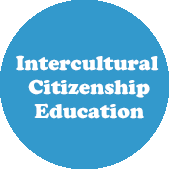Picturebooks
We have our favourite definition of a picturebook, it goes like this:
A picturebook is text, illustrations, total design; an item of manufacture and a commercial product; a social, cultural, historic document; and foremost, an experience for a child. As an art form it hinges on the interdependence of pictures and words, on the simultaneous display of two facing pages, and on the drama of the turning page. On its own terms its possibilities are limitless (Bader, 1976:1)
It can easily be dissected to better help us understand what a picturebook actually is…
Text and illustrations
‘Storybook’, ‘RealBook’ are labels used in English language education which refer to picturebooks. ‘Picture book’ and ‘picture-book’ are also ways to write ‘picturebook’, but the ICEPELL consortium prefer to use the compound form – this recognizes the interdependence of pictures and words; their symbiotic relationship resulting in the final product being more than the sum of its parts.
Pictures and words are different: pictures show, and words tell, but ‘the telling influences what we take from what is shown and the showing helps us interpret and understand what we are told’ (Lewis, 2001: 97). Neither picture nor word is read in isolation, both are dependent upon the other … just as two dancers dancing the tango need the skill of the other to produce the dance itself, this is the essence of the relationship between the pictures and words in a picturebook.
Total design
The design of a picturebook, the parts of the book considered peripheral in most literature, is deliberately put to use – pictures overflow into the different picturebook parts. The illustrator and the designer consider the picturebook’s format, its paper, the front and back covers, endpapers, title pages, copyright and dedication pages, so that every single part of a picturebook articulates to produce a unified, aesthetically pleasing end-product.
Picturebooks are magical!
A social, cultural, historic document
Picturebooks cover a myriad of themes which can provide a variety of socially, culturally, and historically appropriate material for the classroom. Picturebooks can also bring the many cultures of the world to our students through the pictures and words they contain.
For the younger learner many cultural nuances may go unnoticed unless a teacher carefully scaffolds and mediates. There are many picturebook titles that show more through the pictures than the words, and as a result leave gaps for personal interpretations. These picturebooks can involve our students in a critical and questioning approach to learning which contributes to developing a respect for diversity and otherness.
Picturebooks cover such topics as migration, climate change, chauvinism, bullying, equality and diversity (to mention but a few), and it is usually through the pictures that children can access other interpretations of what might usually be taken for granted. By using picturebooks students are being given with the tools to begin challenging social constructs.
References
Bader, Barbara (1976). American picturebooks from Noah’s Ark to The Beast Within. New York: Macmillan Publishing Company.
Lewis, David (2001) Reading Contemporary Picturebooks: picturing text. Abingdon, RoutledgeFalmer.





